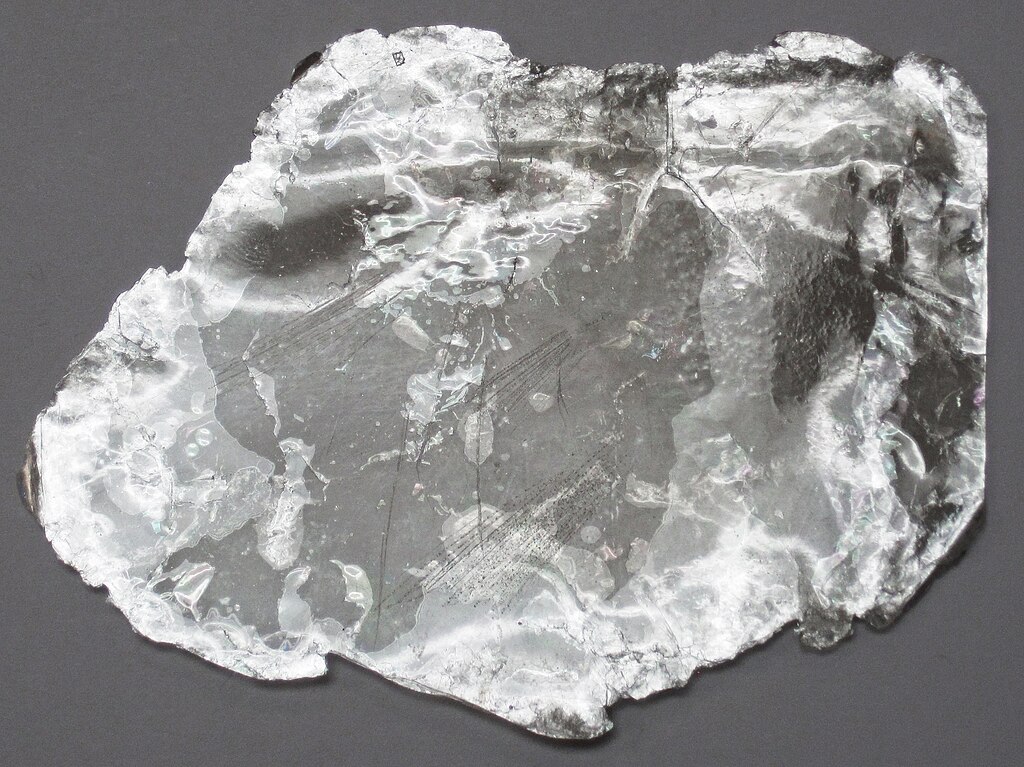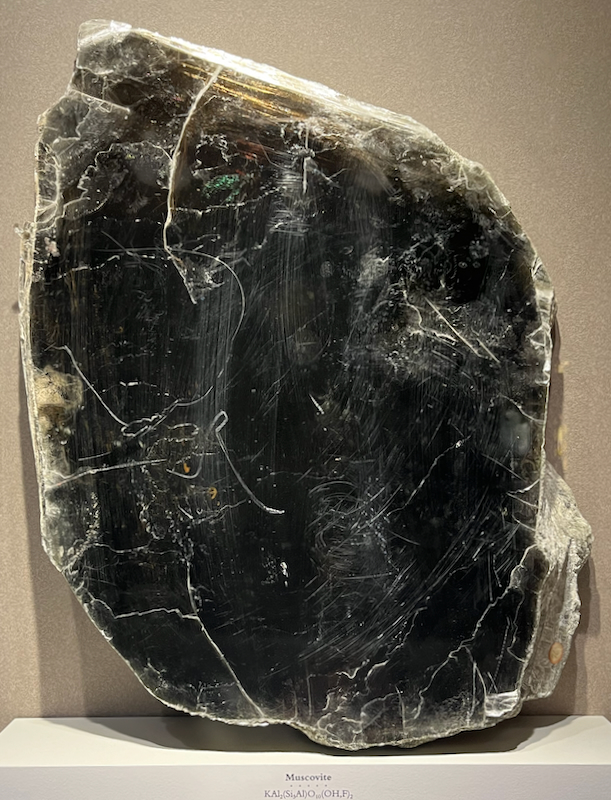Muscovite (Mica)
You may have heard of mica because it’s a mineral you can see through, it’s very shiny and reflective, and you can split it into thin layers. The name mica actually includes a whole group of minerals that are similar in how they form in layers, but when most people say “mica,” they mean muscovite. It’s usually silver colored, while other micas can be green, brown, black, pink, etc. If you can find whole “crystals” of muscovite, they’re often hexagonal (six-sided), whereas the next most common kind of mica, biotite, is usually shaped like a rectangle. Aside from larger sheets, muscovite can form in small stacks of hexagons that, if you’re out collecting, can easily fool you into thinking the stack is actually a single crystal of apatite or beryl. It also occurs in many types of rock, including granite, pegmatite, gneiss, and schist, and one of the most common types of schist is called “mica schist” as a result. Muscovite is super useful for several reasons. Its name comes from the city of Moscow, Russia, where its earliest use was for small windows, since you can see through it. Later it was used for the small windows in wood stoves and furnaces, because along with being transparent, it can really take the heat. Along with heat, muscovite has special abilities when it comes to electricity too, so it’s very useful in electronics in the parts called capacitors. Some of its more fun uses are for sparkly makeup and car paint, when it’s ground up into tiny reflective flakes and mixed into them.
| Formula | Group or Type | Shape | Hardness | Specific Gravity | Streak | Luster |
|---|---|---|---|---|---|---|
| KAl2(Si3Al)O10(OH)2 | Mica | Monoclinic | 2–2.5 | 2.8–3.0 | White | Vitreous to pearly |

